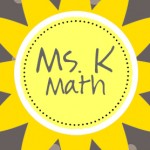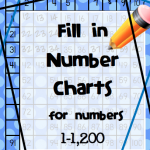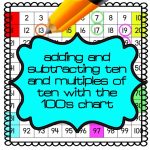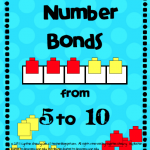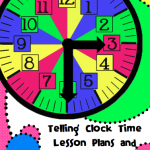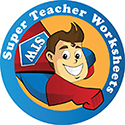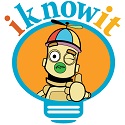Use This Simple Idea to Make Patterns Explicit in Number Charts
When having second grade students explore patterns in number charts which were in increments of 300, it dawned on me to cover up some of the numbers to show students how the numbers repeated. I did this on the document camera. For those students who weren’t able to see the number patterns explicitly, this proved to be very helpful.
The number chart is shown above uncovered.
First, I left one column uncovered except for the hundreds place. Students were easily able to see how the hundreds place repeated.
Then I uncovered all but the tens place. Students saw that the tens place goes up by one ten going down each row.
Finally, I uncovered all except the ones place and students were able to see that the ones place remained the same ALL the way down the chart.
In case you are interested, these number chart printables to 1,200 are available here. There are fill in number charts too.
Smart Board lessons that match the printables are available here which may work even better for showing the patterns with the screen shade.
If a Student Can Build 199 with Base Ten Blocks, Can They Count to 199?
Another base ten realization occurred to me today! Working with one of my intervention groups I had them build the number 199. I initially had the intention for them to add one more unit after they had counted to 199 for them to cross a century. This would make the number 200. While working with the students in the group, only half of them could actually count the number they had built. Then I realized that students can easily build a number with blocks recognizing the pattern of hundreds, tens, and ones without actually understanding the number they have built.
While I know it may take a while, I suggest that while students are building or representing base ten blocks that students actually show their counting numbers underneath, which I had never thought to make students do before. I had always taken for granted that students understood the counting numbers if they could build the numbers with blocks, but this regretfully isn’t always the case.
Great Free Assessments for Each Common Core Standard K-2
We owe North Carolina another thank you for the awesome common core resources that they have helped us all with. Now, I have discovered these common core assessments for K-2 for EVERY standard. They are all downloadable Word document files. Just follow the red arrow in the picture below to know where to click for your grade level.
Below is an example of one of the second grade geometry tasks. You could copy and paste these directly to your lesson plans. The addition and subtraction tasks have word problems already written. Also, I like how they provide a checklist on the side of the task so you can track students’ mastery.
It gets better! There are black line masters to go with the tasks!
Are You Wondering How to fit a 1,000’s Chart on Your Wall? Try this!
I just finished these Smart Board Number Charts to 1,200 and I will be using them with some second graders next week. I have been working on this Smart Board lesson so that students can see a lot of patterns quickly without having to change all of the number cards on a hundreds chart. While the hundreds pocket chart cards have value, it would just take too long to see all of the numbers to 1,000 quickly enough to see how the patterns within the centuries repeat.
Oh, and the best part? The Smart Board number charts are on sale for 20% off ,and tomorrow they will be on sale for 28% off for the Cyber Monday sale! (YAY!) And, you will even get a few charts for free if you stop by my store and download the preview!
There are 1-100 and 1-120 number charts and fill in number charts for K and 1st.
This set of number charts includes charts that start 10 before and 10 after a century so students get practice crossing a century. Counting before and after a multiple of 100 is difficult for many children, and requires practice.
There are also number charts and fill in number charts that count by 2’s, 5’s and 10’s.
There are number charts and fill in number charts in increments of 300 for students to recognize patterns across multiple centuries.
I’m Having a SALE!
I’m having a 20% off sale Sunday, November 25th through Tuesday, November 27. If you wait until Cyber Monday, you will get whipped cream and a cherry on top as Teachers Pay Teachers will add 10% off of my 20% off sale which means you will get a total of 28% off of any of my items. Many other sellers will be having sales, too, so come on over and check it out!
Happy Thanksgiving!
Happy Thanksgiving to all my followers and visitors! There is something to be said about being thankful. No matter how successful or happy you are, being thankful reminds you of where you have come from and of what is really important in life. Being thankful keeps you humble and keeps you from taking things, people, and freedoms for granted.
I am thankful for all of you, visitors and followers. I remember when there were just a small handful of you! I wish you a Happy Thanksgiving. May you enjoy your time with family and friends.
Are Your Students Mixing Up the Hour When Telling Time? Try This
Yesterday, I modeled a lesson in a second grade classroom for students who were struggling with telling time to the nearest 5 minute intervals. Students had the classic problem with telling time. When the hour hand was close to the next hour students mistakenly wrote the hour an hour ahead. For example, when students read the time 8:55, they would write 9:55 instead because the hour hand nearly touched the 9. To alleviate this confusion I used and adapted the idea from the free Georgia Curriculum resources (page 57). Unlike the clock instructions in the Georgia resources, I used sentence strips which I cut up, and paper clips which I threaded through the holes. I ran out of brads, so I used what was available.
To begin my lesson on time, I stretched out the clock on sentence strips in a linear fashion. Then I held my hour hand clock arrow under the numbers and moved it along and asked students what hour it was. I explained to students that until the arrow point was directly on the next number AND in this case color, that the previous number still remained the hour. Students proved to be more successful in telling time on an analog clock after this discussion.
Then after the discussion with the linear clock using the hour hand, I had several student helpers hold the clock in a circle so that they could see how the linear clock compared to the round clock on the wall. I repeated my questioning holding the hour hand in between the numbers and asking them what hour was being shown.

Could the Thousands Blocks in Your Classroom Be Causing a Misconception?
 Students who struggle with number sense aren’t sure how many 10’s are in 100, how many 100’s are in 1000 and so on. Because of this I work on this skill often with students in my intervention groups. On more than one occasion, I have found that students even as old as fifth grade have a misconception about the thousands block. Now that we have math tools made from plastic instead of the vintage wood ones, some students are confused when they lift the thousands block. They realize the plastic thousands block is hollow, so when I ask them how many hundreds are in a thousand, they count the sides and say six. I have to correct them and have them just stack the hundreds blocks until they are the same size. Then they realize that 10 hundreds make 1000.
Students who struggle with number sense aren’t sure how many 10’s are in 100, how many 100’s are in 1000 and so on. Because of this I work on this skill often with students in my intervention groups. On more than one occasion, I have found that students even as old as fifth grade have a misconception about the thousands block. Now that we have math tools made from plastic instead of the vintage wood ones, some students are confused when they lift the thousands block. They realize the plastic thousands block is hollow, so when I ask them how many hundreds are in a thousand, they count the sides and say six. I have to correct them and have them just stack the hundreds blocks until they are the same size. Then they realize that 10 hundreds make 1000.
Integrate Math and Literacy for a Halloween Costume!
 For our fall carnival, we dressed up like a book character. Me being the math coach, I wanted to incorporate literacy AND math. I decided to become “The Greedy Triangle.” The librarian says that kids LOVE this book.
For our fall carnival, we dressed up like a book character. Me being the math coach, I wanted to incorporate literacy AND math. I decided to become “The Greedy Triangle.” The librarian says that kids LOVE this book.
I looked everywhere for cardboard large enough to make a human sized triangle and finally found some in the storage room–chart paper boxes. The bottom of the triangle is as large as the box. Unfortunately, I was disappointed that I wasn’t able to be equilateral like the true Greedy Triangle. I’m isosceles, but that leads to some great geometry discussion with kids!
I covered my front and back triangle with yellow bulletin board paper. Then I made the mouth eyes and nose with white and colored paper, and just glued it onto my front triangle. I just drew the eyes and nose and mouth free handed, and outlined them with marker. I folded the eyes in half so I would have a symmetrical shape. The cheek circles I made by tracing a round cup. A teacher next door helped me staple the yellow ribbon, which I had at home, to the two triangles. The costume fits over my head like a sundress. Underneath as you can see I wore black tights a black cotton T-shirt and skirt which I already had. I would say this whole project took me one hour and cost me nothing–not bad.
The costume isn’t user friendly however if you plan to sit a lot. The cardboard doesn’t bend of course. When going in and out of small areas I found that my vertices would bump into a lot of things. However, this was a plus because I was able to use math vocabulary all day such as….”watch out for my vertices.” 🙂
I received lots of complements on this costume…some “aww how cute” from parents, kids, and teachers. One parent thought I was pizza…but then where are my pepperonis? I guess I could be a happy block of cheese, too! 🙂
With that said, I suppose you could adapt this costume to many things when trick or treating…
Picture this…
“Trick or Treat”
“Hi, honey, what are you dressed up as?”
“A block of cheese, but I’m lactose intolerant.”
“Oh, honey, here’s some extra candy!” 🙂
Need Activities to Teach Counting?
I was so excited to get these unifix books that I ordered. With there being a shortage of counting activities in our regular kindergarten textbook, I was eager to find more. These simple and practical books for kindergarten and first grade offer several counting activities like the following:
- Shapes that students cover with cubes to see how many cubes will fill the shape. Students count the number of cubes that fill the shape.
- Cards with a different number of shapes on them that students match to numbers cards.
- Number cards to match to plastic baggies with cubes in them.
- Games like “First to Fifty” in which students spin a number spinner to draw a certain amount of cubes to cover a board. Students can count how many they have left to cover.
There are some other good number sense activities included also. These are available at Didax for $13.95.
